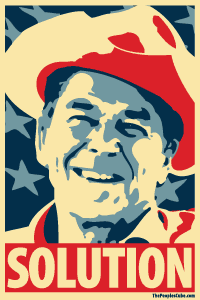What am I paying for in the price of a gallon of gasoline? [Minus Liberal Demonization]
April 29, 2012 by 1 Comment
By Ken Cohen | January 27, 2012 | ExxonMobil Perspectives
 I’m asked this question a lot. And I know a lot of drivers ask themselves this question when they pull up to the pump.
I’m asked this question a lot. And I know a lot of drivers ask themselves this question when they pull up to the pump.
The answer is based on the economics of supply and demand and how products are manufactured and sold – along with what the government takes in taxes. Let’s take a look, based on the U.S. Energy Information Administration’s breakdown of the estimated average price of a gallon of gas in December 2011, which was $3.27.
The cost of the raw materials used to make a product has a major impact on the final product price. The raw material for gasoline is crude oil. The price of crude oil is set by global markets, where buyers and sellers constantly react to supply and demand factors. Oil is just one of many commodities traded every day in the global market. Others are the corn that affects the price of food and the cotton that affects the price of clothing.
Crude oil is by far the largest factor in the price of a gallon of gasoline – accounting for 80 percent of the $3.27 average retail price per gallon in December, according to the EIA.
To put that in another way – about $2.62 of the average gallon of gas in this example is set before a refiner even touches the raw material.
Where I find many people get confused is that they assume oil companies are producing all the oil that goes into their own refineries – and therefore can control gas prices by controlling the supply chain. That’s not the case.
U.S. crude oil production in 2010 was 5.5 million barrels per day. But U.S. refineries processed 15.2 million barrels of oil per day – almost three times more oil than was produced in the U.S. That means U.S. refiners, like ExxonMobil, have to purchase millions of barrels of crude oil – at market prices – to produce gasoline and other products for American consumers. For example, in 2010, ExxonMobil spent $198 billion purchasing oil around the world for its refining operations.
Like any product, there are costs to manufacture it – so the manufacturer tries to recover those costs, plus make a profit, when it goes to sell the product.
The refining portion of a gallon of gasoline has, on average, accounted for about 11 percent of the price in 2011, according to the EIA data through December. That means a little less than 40 cents per gallon would be due to refiners’ costs – wages, equipment, financing and others – plus their profits.
As the EIA figures show, however, refining doesn’t always produce a profit. In December, the data indicate that the U.S. market price for gasoline coming out of refineries was on average about 7 cents per gallon (-2 percent) below the refiners’ cost of crude oil alone, and before accounting for their costs of upgrading the crude into gasoline. In other words, refineries faced a market where domestic gasoline prices were very weak relative to global crude prices.
How does that happen? Refiners are “price takers” that operate on relatively low profit margins that are highly dependent on the market demand for petroleum products. That means at times, the value of a petroleum product coming out of the refinery isn’t enough to cover the costs of obtaining and refining the crude oil.
 Distributing and marketing the product = $0.33
Distributing and marketing the product = $0.33
Products then have to get from the manufacturing site to the retail site. When gasoline leaves the refinery, it is shipped largely via pipelines to local terminals. There, distributors load their trucks and transport the gasoline to a service station. Naturally, each step in the distribution chain includes labor, capital equipment and other expenses that must be recovered by operators. Of course, these operators must also compete to sustain their profitability while also paying taxes.
Retailers then set the price at the pump, based on recovering these costs of getting gasoline to the service station and the costs of marketing it to consumers. They also have to generate enough money to pay their taxes and make a profit to keep their business running. And on top of that, they have to collect mandatory state and federal gasoline taxes from the consumer (which we’ll break down in the next section).
So who are the retailers setting the prices? When consumers pull into an Exxon or Mobil station, they assume it’s ExxonMobil. But we own only about 5 percent of the stations with our name on them. About 95 percent of the stations carrying the Exxon or Mobil brand are actually owned by network retailers or local business owners – not ExxonMobil.
So how much does the government make on a gallon of gas?
In this example, retailers collected state and federal gasoline taxes of 39 cents per gallon on average. Total gas taxes per gallon range by state – from lows of less than 30 cents per gallon to highs of more than 60 cents per gallon in places like New York and California.
How does this compare to what a company like ExxonMobil makes on a gallon of gasoline? As we saw earlier, sometimes a company or an operation may lose money. Other times, it may make money. A competitive market just provides an opportunity, not a guaranteed profit. In the first two quarters of 2011, for example, ExxonMobil made 7 cents and 8 cents a gallon , respectively, on the gasoline, diesel and other petroleum products it refined and sold in the United States.
Read the full article here.
Related Articles
- Is Gasoline Cheaper Than Water? by Dom Armentano (postamericana.wordpress.com)
- Yesterday I bought premium gas for my car and had a coronary attack (bonjupatten.com)
- Crude oil tops $104 (upi.com)
- Why Do Gasoline Prices Differ Across U.S. States? (wallstreetpit.com)
- Gasoline Expected to Top $4 Per Gallon in May (blogs.wsj.com)
- The Myth That The US Will Soon Become An Oil Exporter (businessinsider.com)
- State-level retail gasoline taxes vary significantly (bespacific.com)
- The Myth That the US Will Soon Become an Oil Exporter (energybulletin.net)
- Chevron Follows Conoco, Exxon on Production Declines (CVX, COP, XOM) (247wallst.com)
- The Myth That the US Will Soon Become an Oil Exporter (theoildrum.com)
Is Serfdom an Executive Order Away?
April 11, 2012 by 1 Comment
By Sheldon Richman | April 06, 2012 | Freeman
National Defense Resources Preparedness
Sometimes a step back helps to provide perspective on a matter. President Obama provided such a step with his March 16 Executive Order—National Defense Resources Preparedness. In it we see in detail how completely the government may control our lives—euphemistically called the “industrial and technological base”—if the president were to declare a national emergency. It is instructive, if tedious, reading.
President Obama claims this authority under the Constitution and, vaguely, “the laws of the United States,” but it specifically names the Defense Production Act of 1950. As Robert Higgs of the Independent Institute and a Freeman columnist observed, the government’s authority to commandeer the economy, which was “abandoned” after World War II then substantially reinstated with the Korean War,
was retained afterward in the form of statutory authority for its reinstatement whenever the president might so order under the authority of the Defense Production Act of 1950, as amended. . . . Under this statute, the president has lawful authority to control virtually the whole of the U.S. economy whenever he chooses to do so and states that the national defense requires such a government takeover.
No Academic Exercise
The Executive Order, which requires no additional congressional approval, details who within the executive branch has what precise authority in the event the President invokes his emergency powers. We shouldn’t assume this is merely an academic exercise or that a third world war would need to break out. In the last decade, under circumstances representing no “existential threat” to our society, the executive branch has exercised extraordinary powers.
Reading the Executive Order, I was reminded of a quotation of Leonard Read’s (HT: Gary Chartier): “[A]nyone who even presumes an interest in economic affairs cannot let the subject of war, or the moral breakdown which underlies it, go untouched. To do so would be as absurd—indeed, as dishonest—as a cleric to avoid the Commandment, ‘Thou shalt not steal’ simply because his parishioners had legalized and were practicing theft.”
In other words, if one holds that a free economy is essential to human flourishing, one must look with alarm on the comprehensive power government’s chief executive claims in the event he (or she) declares an emergency.
Read the full article here.
Related Articles
- Is Serfdom an Executive Order Away?: The dangers of National Defense Resources Preparedness (3quarksdaily.com)
- New Obama Executive Order Seizes U.S. Infrastructure and Citizens [Including Forced Labor] for Military Preparedness (johnmalcolm.me)
- Why would Obama sign an executive order like this? Why is “The Media” quiet? (trutherator.wordpress.com)
- President Obama signs Executive Order allowing for control over all US resources (johnmalcolm.me)
- Obama’s ‘Martial Law’ Order Revealed: Hidden Executive Orders (johnmalcolm.me)
- Robert Higgs on Obama’s Fascist Executive Order (notesandobservations.me)
- Executive Order: “National Defense Resources Preparedness” (minx.cc)
- Yet Another Executive Order – Establishing a White House Council on Strong Cities, Strong Communities (johnmalcolm.me)
- Executive Order: National Defense Resources Preparedness (thecollegeconservative.com)











